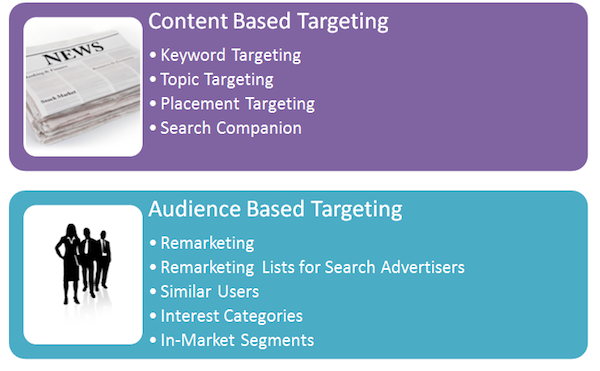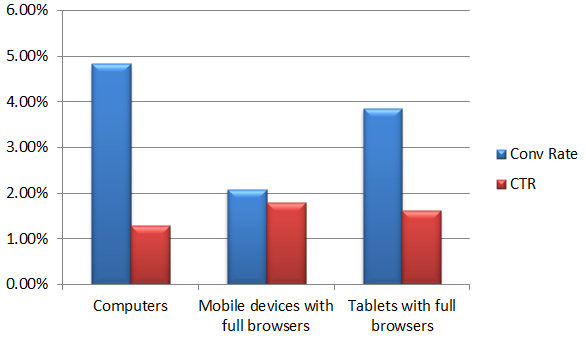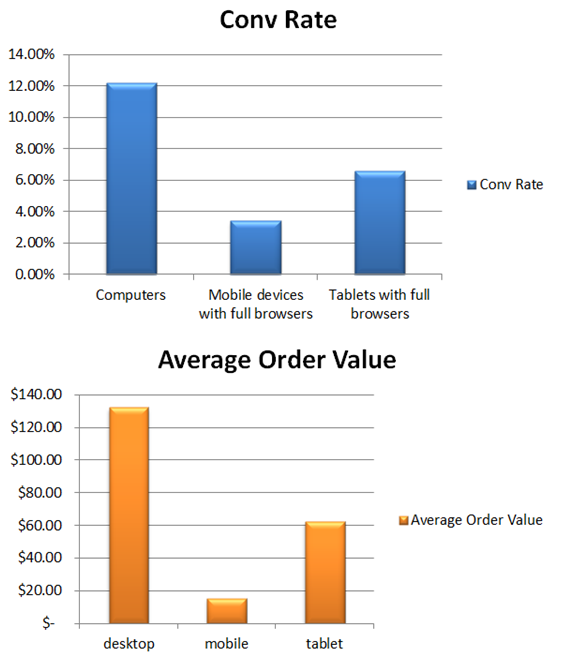
Just when you think you have the Google Display Network (GDN) figured out, another pitfall opens that may cause advertisers to generate erroneous spend, resulting in poor performance.
There are a few factors that may cause unqualified traffic, such as mobile devices, campaign targeting, ad copy – but ultimately, I blame the children (but we’ll get to them in a minute).
Our Audience Was Clearly Defined
For a recent GDN campaign we wanted to target parents, specifically moms over the age of 30. Historical purchase analysis determined this was the audience most likely to purchase our product. Our objective was to place ads in front of these moms on the GDN in an effort to get them to click and purchase.
There isn’t a great amount of content written specifically about our product, but we wanted to get in front of moms reading articles related to raising kids (pre-school aged, specifically).
Targeting Was Tight
When managing campaigns via the GDN I prefer a diversified approach. We implemented two strategies to reach our audience.
One strategy was based on content read by our audience (utilizing keyword and topic targeting via the GDN).
Our second strategy was based on user demographics (utilizing age, gender, and cookie-based initiatives such as Similar Audiences).

Most User Engagement Metrics Were Weak
Upon launching the campaigns, we were relatively pleased with the initial click-through rates (CTR). In fact, CTRs were quite a bit higher than our average GDN performance. However, other user engagement metrics were rather poor – to put it nicely:
- Average visit duration was half of the site average.
- Bounce rates were approximately twice the website average.
- Pages-per-visit was significantly lower than average.
- Conversion rates barely had a heartbeat.
It was almost as if the website had a horrific stench and people had to get out of there as quickly as possible. Don’t worry, we’ll get to the kids soon.
Tablet Traffic Was Significant
We allowed the campaigns to run for a few days to see if performance would improve or level out, but it didn’t. Once we had a significant amount of data, we dove into our analysis.
The first thing to jump out at me was the amount of traffic generated by tablets. We hit our budget caps every day (we didn’t want to over-spend since sales were initially pretty slow) and approximately 70 percent of our traffic was coming from these devices. We had our mobile bid modifier turned down to -100 percent.
In general, I have found that tablets have weaker conversion rates than PCs. People are getting more accustomed to making purchases via their tablets, but I think these devices are still secondary to PCs and used mostly for browsing, education, and comparison shopping. Tablet usage is still fragmented meaning people use their tablets while doing something else (like watching TV or traveling).

However, in this case, there was a stark difference between devices. Conversion rates on PCs weren’t as strong as they should have been but tablets were a major issue.

Majority of Tablet Traffic Was From In-App Games
Our demographic and cookie-based targeting via the GDN wasn’t necessarily bad. Here is a quick breakdown of a few targeting strategies:
- Individuals who were similar to our previous customers (Similar Audiences)
- Individuals who were shopping for kid-related products (In-Market Audiences)
- Individuals who had kid-related interests (Interest Targeting)
- Layered over demographic modifiers. Increased bids for women, decreased bids for men.
- Layered over age-based modifiers. Increases bids for the over-30 age group, and removed the under 24 crowd.
With these targets we should have been getting in front of our audience with a pretty high rate of success. In many ways, we were.
We dove further into our analysis by looking at placements via the GDN. These placements were generating most of our traffic:
- mobileapp::2-com.fuegosoft.disneyseries1
- mobileapp::2-com.developerstudio.PrincessAnnaFrozenlivewallpaper
- mobileapp::2-manyapps.net.games.mem2.aphabet
- mobileapp::2-com.kauf.talking.baum.Talking3FriendsCatsandBunny
- mobileapp::2-com.appsorg.bubbles.candy.night
- mobileapp::2-com.danielkim.camus.ILoveMyLittlePony
- mobileapp::2-com.iceworksgroup.kid.doodle
- mobileapp::2-com.degoo.android.icesmoothies
I don’t know about you, but most mothers I know aren’t spending their time looking at pictures of animals, or coloring barnyard pictures, or playing games that teach you how to read. But I bet their kids do. My 3-year-old daughter plays these types of games and uses these kinds of apps all the time.
And this is where the children come in to play. Literally.
Our theory: We got in front of the right people (moms over the age of 30). Our GDN targeting found the right people based on cookies, or browser history, or search query history and that is great.
Basically, our ads had found the right person and device. It was the user behavior that was the challenge.
Sure, when mom was browsing relevant content, our ads appeared – but our ads also appeared when mom would hand their tablet (probably an iPad) over to their kid form some tech-based playtime. I am a case study of one so my research is extremely limited, but my daughter clicks in-app ads all the time. Often I hear, “Daddy it’s not working!” as she is playing Talking Tom. I’m surprised numerous unwanted (and probably inappropriate) items haven’t shown up on my doorstep.
Exclude In-App Ads From Campaigns
We found that the GDN performs poorly via mobile devices in general. When you’re creating your campaigns, please be careful with your targeting.

In fact, you should give serious consideration to your GDN device targeting. Unlike the Search Network, you have a great deal of control over devices.
Here are a few quick action items to take within your GDN campaigns in terms of thinking about tablet traffic via the GDN:
- Review your device traffic. If tablets are a disproportionate percent of your traffic, then you may have some targeting issues.
- Review your placement reports. You can find these mobile apps within the Placement Performance Report. Check it out.
- Remove the In-App game category from your campaign. More than likely, you don’t want any traffic from any games so just go ahead and remove this category. Here’s a screenshot of this in-app game category in the AdWords interface:

- Remove tablets from your targeting in general. If these devices don’t work well for your campaigns, just remove them totally.
Summary
OK, ultimately the children aren’t to blame for these faulty campaigns. They are just bystanders innocently trying to play games and accidently clicking on ads. I blame Google.
With the introduction of enhanced campaigns, advertisers are no longer able to exclude tablets from their campaigns (yes, tablets are mobile devices) or target these device in separate campaigns. The data that I’ve provided here support the fact that tablets are not the same as PCs as Google is now proposing with enhanced campaigns.
Within AdWords, campaign managers can target specific devices via the GDN. Actually, the targeting capabilities on the GDN for individual devices are very robust. You can target devices by operating system and device models. You can even target specific versions of each OS.
If you can target these devices, you should be able to exclude them too. But that isn’t in Google’s best interest. Here’s a screen shot of this settings section within AdWords:

The inability to segment devices means that advertisers are forced to run ads via tablets, even if the performance is terrible. This is bad for advertisers. But it’s good for Google because it increases their profits.
Don’t worry, Google. I still love you. You do most things right. You actually do a lot of good for advertisers and I appreciate it. But in this instance, you’re getting a wag of the finger.






